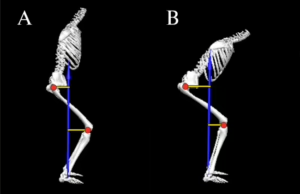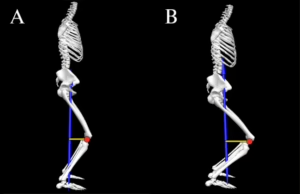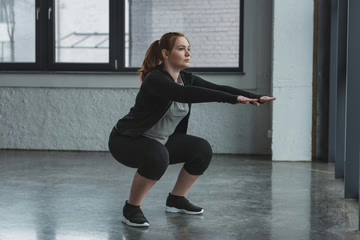Squats – The Ultimate Functional Strength Exercise
Typically, knee arthritis (osteoarthritis or OA) is characterized by reduced articular cartilage on the femur and tibia bones that make up the knee, and can lead to increased bony formation. Inflammation is usually associated and present at the knee when this occurs. The good news is, strengthening, flexibility/stretching, and mobility training can greatly improve inflammation in the joint and improve symptoms. A very functional strength exercise is the SQUAT!
Squatting is a functional movement used in everyday activities such as bending to pick something up off the ground, standing from a chair, and toileting. Many believe that squatting for exercise should be avoided when you are having knee pain, when in fact, you already squat everyday of your life. To sum it all up, incorporating a squat to an exercise regimen can actually benefit your knees!
Why is Squatting So Important?
It is important to be able to perform a functional squat to increase strength of many different muscle groups at once in addition to an isolated muscle strengthening program. This exercise requires activation of gluteals, quadriceps, hip adductors and hamstrings – all of which are large muscle groups that improve overall lower body strength. This will help ability to perform many different functional tasks that may already be painful.
To Squat or Not to Squat?
It is very easy to see a doctor, receive a cortisone injection for pain, and avoid all activity because “it could make it worse.” However, in reality, it is quite the opposite. Research shows that being sedentary puts you at a HIGHER risk of joint space narrowing – aka arthritis. Additionally, it has been shown that a strengthening program can improve joint pain and slow the degeneration.
What is Proper Squat Form?
With a normal squat, the knee experiences about 2-5 times the normal body weight. You also may be hearing “crunching” or “clicking”, and this is not abnormal. Noises during squatting are called crepitation, and can be explained by something as simple as air pockets being released by the joint. When performing a squat, the forces at the knee are greater when you have a more upright trunk, which can increase pain in knees (1A). If you allow more trunk flexion, the knees will experience less force and more will be required at the hip (1B). Similarly, if knees travel over toes, there will be more force at knees, which can also increase pain (2A). Maintaining the lower leg in a parallel position instead can reduce pain with motion (2B).

Figure 1

Figure 2
How to improve/change squat mechanics to reduce knee pain
- Lean forward with your chest and push buttock backward
- Leaning forward reduces reduces knee and quad work, and increases glute activity
- Pushing butt backwards can improve glute activation and reduce strain on anterior knees
- Reduce knee over toes
- It is not “bad” to have your knees go over your toes, but can be more painful if you already have knee pain. Keeping the shins more perpendicular to the ground and behind toes and reduce forces on knees.
- Widen your stance
- Reduced glute activity and reduced knee forces
- Rotate toes outward
- This helps reduce forward motion of tibia over toes which can reduce overall load on knees
- Rotate hips outward
- Pay attention to knee position, and ensure knees are tracking in line with toes and not caving inward. This will help maintain equal loading through the knee and help patellar tracking.
- Utilize hands at kitchen counter or bar to assist
- Using hands for assistance at a bar can improve posterior weight shift and reduce anterior load on knees. Of course, you are also reducing load on legs due to upper extremity assist.
If you’re experiencing knee pain and are unsure where to turn, Arizona Orthopedic Physical Therapy is here to help. We have physical therapy clinics in Buckeye, Goodyear, Glendale, Gilbert and Prescott ready to help you!
Resources:
https://pmc.ncbi.nlm.nih.gov/articles/PMC6874930/
https://pmc.ncbi.nlm.nih.gov/articles/PMC10987311/
https://pmc.ncbi.nlm.nih.gov/articles/PMC7160724/







